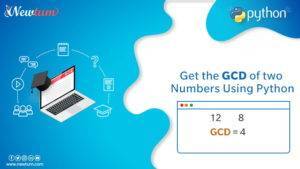“How to Use Pointers with Different Data Types in C?” If that question sparks your curiosity, you’re in the right place! Pointers might seem daunting, but they’re crucial for unlocking C programming’s full potential. We’re diving into this topic, turning complex ideas into simple steps. Whether you’re a newbie or brushing up your skills, this journey’s paved with clarity and practical insights. Stick with us, and you’ll master pointers with ease—read on, and let’s demystify it together!
What Are Pointers in C?
In C programming, a pointer is a variable that stores the memory address of another variable. Instead of holding a direct value like an integer or a character, a pointer holds the location in memory where a value is stored. Pointers allow direct memory access and are a powerful feature in C.
Syntax
<data_type> *pointer_name;
Here:
data_typerefers to the type of data the pointer will point to (likeint,float,char, etc.).- The asterisk
*indicates that the variable is a pointer. pointer_nameis the name of the pointer variable.
Diagram: Memory Address and Pointer Reference
int a = 10;
int *ptr = &a;
+-----------+ +-----------------+
| Variable | | Pointer |
+-----------+ +-----------------+
| a | -----> | ptr |
| 10 | | address of a |
| 0x1000 | | (0x1000) |
+-----------+ +-----------------+
aholds the value10and is stored at memory address0x1000(example).ptrholds the address ofa, i.e.,0x1000.*ptrwill give the value at the address, i.e.,10.
2. Declaring Pointers with Different Data Types
You can create pointers for any data type in C. The pointer’s type must match the type of the variable it points to.
Integer Pointer
int a = 25;
int *ptr = &a;
Float Pointer
float b = 12.5;
float *ptr = &b;
Char Pointer
char c = 'X';
char *ptr = &c;
Double Pointer
double d = 3.1415;
double *ptr = &d;
Each pointer must be declared with the same data type as the variable it is meant to point to. This ensures proper memory handling and pointer arithmetic.
3. Using Pointers with Integer Data Type
Code Example:
#include <stdio.h>
int main() {
int num = 50;
int *ptr = #
printf("Value of num: %d\n", num);
printf("Address of num: %p\n", &num);
printf("Value stored in ptr: %p\n", ptr);
printf("Value pointed to by ptr: %d\n", *ptr);
return 0;
}
Output:
Value of num: 50
Address of num: 0x7ffee2a17b1c
Value stored in ptr: 0x7ffee2a17b1c
Value pointed to by ptr: 50
(Note: The memory addresses will differ when you run the program)
Explanation:
int num = 50;declares an integer variable.int *ptr = #creates a pointer tonumusing the address-of operator&.ptrnow holds the memory address ofnum.*ptrdereferences the pointer to access the value at that address, which is50.
This process is known as:
- Referencing: Using
&to get the memory address. - Dereferencing: Using
*to access the value stored at that address.
4. Pointers with Float, Char, and Double
A. Float Pointer
Code:
#include <stdio.h>
int main() {
float pi = 3.14f;
float *ptr = π
printf("Value of pi: %.2f\n", pi);
printf("Address of pi: %p\n", &pi);
printf("Value pointed to by ptr: %.2f\n", *ptr);
return 0;
}
Output:
Value of pi: 3.14
Address of pi: 0x7ffee19fabc0
Value pointed to by ptr: 3.14
Explanation:
float *ptris used to point to a float variable.*ptrgives the float value stored at the memory address.- This allows floating-point values to be manipulated indirectly.
Memory Size Note: A float typically occupies 4 bytes.
B. Char Pointer
Code:
#include <stdio.h>
int main() {
char ch = 'A';
char *ptr = &ch;
printf("Value of ch: %c\n", ch);
printf("Address of ch: %p\n", &ch);
printf("Value pointed to by ptr: %c\n", *ptr);
return 0;
}
Output:
Value of ch: A
Address of ch: 0x7ffee219ea6f
Value pointed to by ptr: A
Explanation:
char *ptris a pointer to a character.- Dereferencing the pointer gives the character stored at that memory location.
Memory Size Note: A char occupies 1 byte.
C. Double Pointer
Code:
#include <stdio.h>
int main() {
double rate = 7.456;
double *ptr = &rate;
printf("Value of rate: %.3lf\n", rate);
printf("Address of rate: %p\n", &rate);
printf("Value pointed to by ptr: %.3lf\n", *ptr);
return 0;
}
Output:
Value of rate: 7.456
Address of rate: 0x7ffee18fb9c8
Value pointed to by ptr: 7.456
Explanation:
double *ptrpoints to a variable of type double.- Dereferencing gives the double precision value stored in memory.
Memory Size Note: A double typically occupies 8 bytes.
5. Common Mistakes to Avoid
Using pointers effectively in C requires attention to detail. Here are some common mistakes to avoid:
Mismatched Data Types
Declaring a pointer of one type and assigning it the address of another type can lead to unexpected behavior or compilation errors.
Incorrect:
int num = 10; float *ptr = # // Wrong: mismatched types
Correct:
int num = 10; int *ptr = #
Uninitialized Pointers
Declaring a pointer without initializing it can cause it to point to a random memory location, leading to undefined behavior or crashes.
Incorrect:
int *ptr; *ptr = 5; // Undefined behavior
Solution: Always initialize pointers to NULL or a valid address.
int *ptr = NULL;
Memory Leaks or Invalid Access
Failing to free dynamically allocated memory or accessing memory after it’s freed can lead to memory leaks or segmentation faults.
Example of Memory Leak:
int *ptr = (int *)malloc(sizeof(int)); // forgot to free(ptr);
Example of Invalid Access:
int *ptr = (int *)malloc(sizeof(int)); free(ptr); *ptr = 20; // Invalid: accessing freed memory
Always release dynamically allocated memory using free() and avoid using pointers after freeing them.
6. Why Understanding Data Type Matters with Pointers
Understanding how pointers interact with different data types is essential for writing safe and efficient C programs.
Type Safety
Each pointer is strongly typed. A float* should point to a float, and a char* should point to a char. This ensures:
- Correct interpretation of the data in memory
- Avoidance of type-related bugs
- Compiler-level error checking
Arithmetic and Memory Access
Pointer arithmetic depends on the data type:
int *ptr; // Each ptr++ advances 4 bytes (on a 4-byte system) char *ptr2; // Each ptr2++ advances 1 byte
The compiler uses the data type to determine how many bytes to move when performing arithmetic operations.
Use in Functions and Arrays
Pointers are crucial when passing arrays or large data structures to functions without copying the data.
Example:
void update(int *p) {
*p = 100;
}
Understanding the data type helps:
- Ensure correct memory access
- Prevent overflow or segmentation faults
- Maintain code readability and maintainability
Mastering Pointers for Real-Life C Programming
- Memory Management in Operating Systems: Companies developing operating systems, like Microsoft or Apple, extensively use pointers for memory management. By using pointers with different data types, these companies can efficiently allocate memory for variables, manage arrays, and optimize RAM usage, which is crucial for ensuring swift system performance.
- Embedded Systems in Automobiles: Automobile companies, such as Tesla, employ pointers to handle sensor data within their cars’ embedded systems. By using pointers, they can read data from sensors like accelerometers or gyroscopes in the car and process it efficiently, making real-time decisions to enhance safety and performance.
- Database Management Systems (DBMS): Companies like Oracle and MySQL use pointers to manage large databases. Pointers enable these systems to navigate data efficiently by pointing to different records and data types, ensuring quick access and manipulation without unnecessary data duplication.
- Game Development: Game development companies like Ubisoft or EA use pointers when programming in C to manage graphics and assets. They optimise the performance of games by dynamically loading textures and objects into memory, minimising lag during gameplay. This enhances the overall gaming experience.
Looking to enhance your coding skills in C? Our AI-powered C online compiler is your perfect companion. You can write, run, and test your code instantly, all with the smart assistance of AI, making coding smoother and more efficient than ever before.
Conclusion
“How to Use Pointers with Different Data Types in C?” empowers you with essential skills to manage memory efficiently in C programming. By mastering pointers, you’ll boost your ability to write powerful, optimized code. So, why not delve deeper? Visit Newtum to enhance your programming prowess.
Edited and Compiled by
This article was compiled and edited by @rasikadeshpande, who has over 4 years of experience in writing. She’s passionate about helping beginners understand technical topics in a more interactive way.



